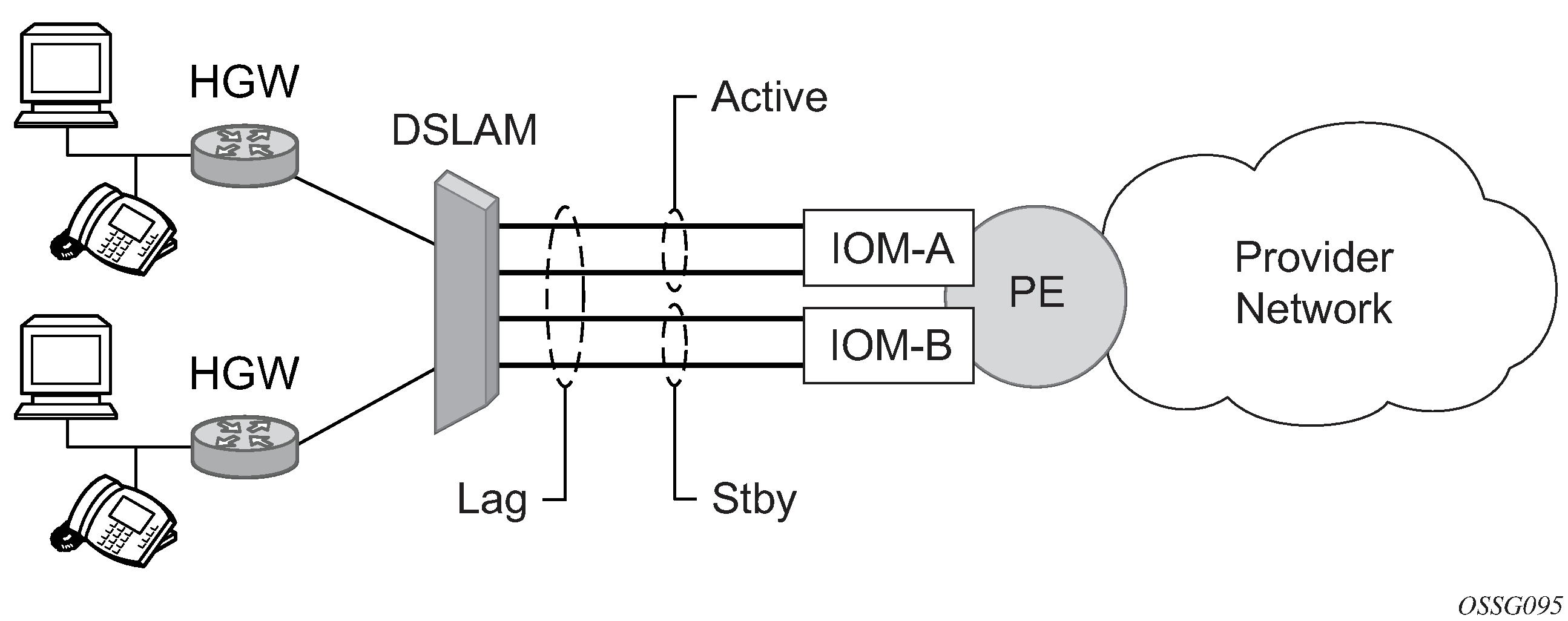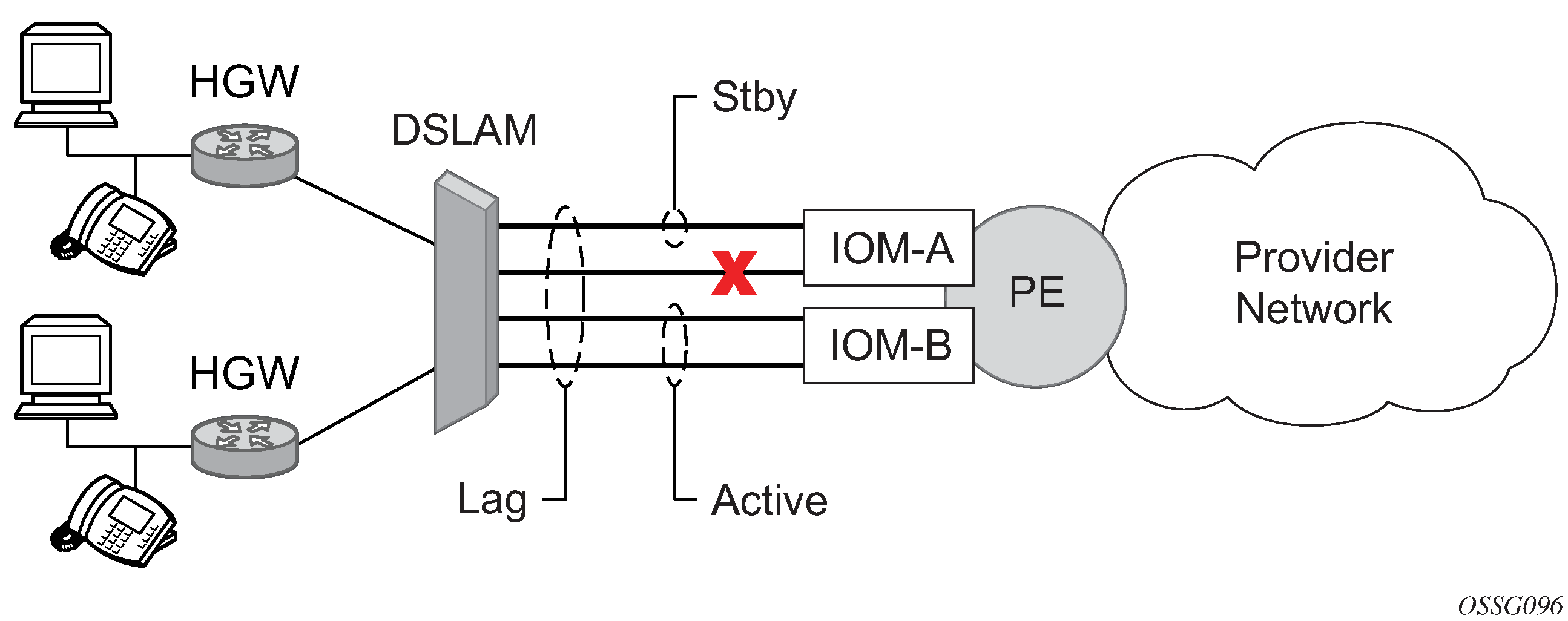An active-standby LAG provides redundancy by logically dividing LAG into subgroups. The LAG is divided into subgroups by either assigning each LAG’s ports to an explicit subgroup (1 by default), or by automatically grouping all LAG’s ports residing on the same line card into a unique sub-group (auto-iom) or by automatically grouping all LAG’s ports residing on the same MDA into a unique sub-group (auto-mda). When a LAG is divided into sub-groups, only a single sub-group is elected as active. Which sub-group is selected depends on selection criterion chosen.
The active-standby decision for LAG member links is a local decision driven by pre-configured selection-criteria. When LACP is configured, this decision was communicated to remote system using LACP signaling.
To allow non-LACP operation, an user must disable LACP on a specific LAG and select transmitter-driven standby signaling (config>lag standby-signaling power-off). As a consequence, the transmit laser is switched off for all LAG members in standby mode. On switch over (active-links failed) the laser is switched on all standby LAG members so they can become active.
When the power-off is selected as the standby-signaling, the selection-criteria best-port can be used.
It is not be possible to have an active LACP in power-off mode before the correct selection criteria is selected.
Figure: Active-standby LAG operation without deployment examples shows how LAG in Active/Standby mode can be deployed toward a DSLAM access using sub-groups with auto-iom sub-group selection. LAG links are divided into two sub-groups (one per line card).

In case of a link failure, as shown in Figure: LAG on access interconnection and Figure: LAG on access failure switchover, the switch over behavior ensures that all LAG-members connected to the same IOM as failing link become standby and LAG-members connected to other IOM become active. This way, QoS enforcement constraints are respected, while the maximum of available links is used.

